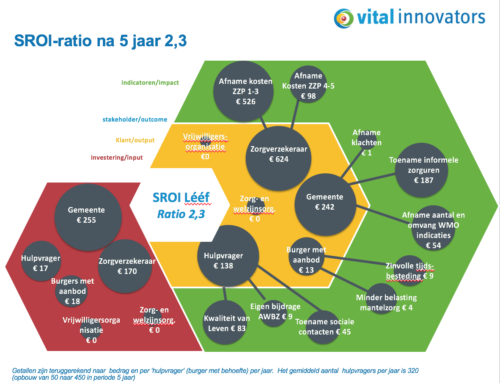Intention
Mental health care in the Netherlands can and must be better. I regularly compare mental health care with V&D or Blocker; companies that have remained too introverted and have relied too much on their own offerings. In this they have been too little client-oriented and in fact that non-client-orientedness is their downfall (V&D) or near ruin (Block) become.
Improving mental health care requires a new way of organizing care around the client. It requires a complex turnaround that will have to be implemented on multiple levels and planes, from individual care provider level to department- in concernlevel, from societal level to the specific field of health care.
Approach
The approach was to investigate with a team whether it is possible to set up a smaller organization within mental health care that is completely client-oriented in all fibers and cells.. We did this in the form of a testing ground, this offered the team free space to experiment.
In May 2016 we started with a team, consisting of 2 nurse specialists, an ambulatory nurse, a clinical psychologist, two psychiatrists and four experience experts. We made agreements about how we would handle it. This resulted in four principles:
- Client in the lead and truly restorative work.
- Network organization: Mental health care has been an inward-looking stronghold for too long. By collaborating much more with society and in the neighborhood you make the client less dependent on mental health care and you broaden the options for the client..
- Care without bulkheads: We think that the care as organized at the GGZ has too many partitions. For a referrer it is often completely unclear how he/she can refer and also where to. We feel like a big black box to outsiders.
- Working with experiential experts in proportion 1 until 3. Within mental health care, it is currently widely believed that the experts by experience are the third source of knowledge. The experts by experience are on the rise within the often social domain of mental health care.
Result
The experiences and the process of the living lab were positive, the desire for change in mental health care is now widely supported. Despite this, it has not been possible to continue with the living lab and principles and to realize the intended turnaround in care provision. It was not possible to put the results and findings of the living lab into practice.
- The result of the living lab was that we gained many valuable insights and lessons:
internal bumps and systems were more complicated than anticipated. We ran into stubborn internal partitions; both in people's heads, as in the financing as in the department- and organization partitions. - We gradually discovered that some things didn't seem to work at all. Irritations and tears arose in the team because we all had our own approach. For example, the experience expert in the team wanted to discuss the casuistry in the team, while we actually wanted to do this with the client instead of. before the client.
- We would not treat the client separately from his environment, but in practice this turned out to be difficult because many clients turned out to have lost contact with family and society. Because we didn't have a fixed location, but we also lost sight of each other as a team from a community center.
- Change takes time and attention and takes a lot of courage and guts.
- We found that we were often limited in our view by the medical judgment we have from our field. As a result, we were not always able to help clients with an open and curious approach. By becoming aware of this, we have grown more and more towards an open dialogue.
- We started with the starting point; the client in the lead, but in fact we were still regularly stuck in our own system of looking, thinking and doing. We think solution-oriented and are therefore not always listening with full attention. We still felt responsible for the client, as a result of which we did not congruently continue to give direction to the client.
Lessons
The most important lesson was that small changes and adjustments at the policy and organizational level are not enough to achieve the intended changes in healthcare.. This required a far-reaching change and a new organization of care.
Moreover, it is important to look further at the start of a project or small-scale experiment and to think carefully about the end goal, how you are going to achieve that and what follows. I was unable to estimate in advance that the living lab would be a success and also that the way in which it became a success would be completely out of step with what we were doing in the organization. In that sense, the testing ground was successful and failed at the same time. Next time I would discuss internally before the start what the support is within the organization to actually do things structurally differently.. Or in other words, I should have coordinated better what the expectations of the living lab were with the board of directors and whether, if it was successful, there would be a willingness to also tackle far-reaching implications for the organization.
Name: Neel Schouten
Organization: Mental health care in Geest Amsterdam









